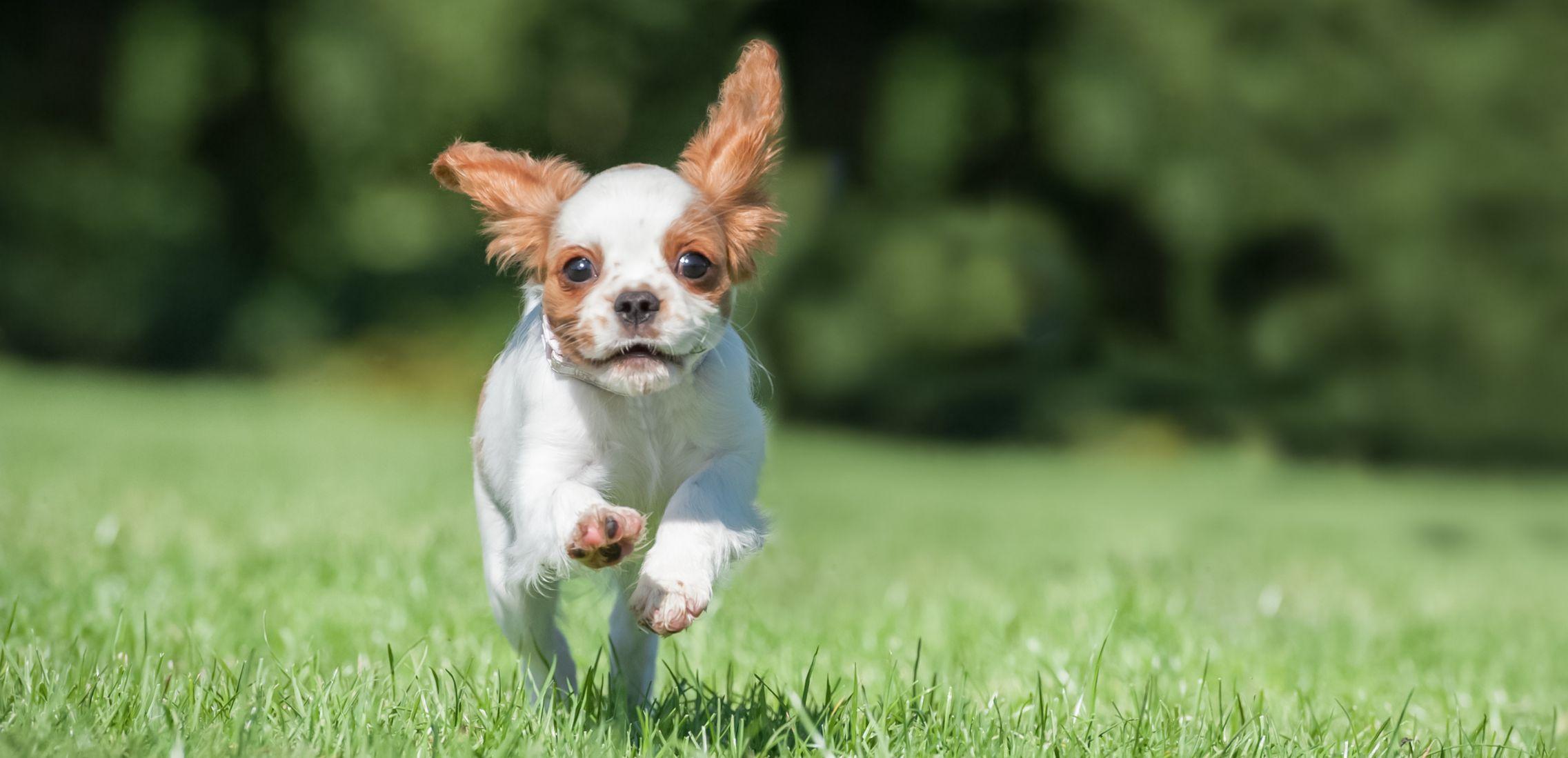Your Cart is Empty
Get Up To 35% OFF & Free Delivery
Get Up To 35% OFF & Free Delivery
Get Up To 35% OFF & Free Delivery

Have you ever called your dog, only to be totally ignored as they turn to chase a squirrel or head in the opposite direction? Teaching a dog to “come” when called is not just about obedience–it’s essential to their safety and your peace of mind. Whether it’s to prevent them from darting into traffic, navigating crowded parks, or simply having them come inside, mastering this command can truly be a game-changer.
By mastering the "come" command, you'll not only enhance your dog's safety but also strengthen the bond between you, creating a harmonious relationship built on trust and responsiveness.
In this guide, we’ll share the practical steps to help you train your dog to come reliably when you call them. We’ll also look into the possible reasons why your dog struggles to respond to your calls. Let’s get started.
When teaching your dog to come when called, think of it like you're building a trust bridge between you and your furry companion. When you teach a dog to come, it might be challenging but it’s incredibly rewarding once they grasp the command. This foundational skill not only ensures safety but strengthens your bond.
Now, let’s break down the six easy steps that will guide you to effectively teach your dog to come when called.


1. Use tempting rewards: Make it worth their while! Start with treats that your dog can’t resist. Think of it as offering a chicken nugget instead of a broccoli–your dog will definitely come running!
2. Run and call: Dogs love to chase. Run a few steps away from your dog and call their name excitedly. Your excitement will be contagious and they’ll eagerly follow you.
3. Reward and repeat: Practice makes perfect. Each time your dog comes to you, reward them generously and repeat the process. Consistency is key to building a reliable recall.
4. Increase the challenge: Once your dog gets the hang of it, gradually increase the distance and introduce mild distractions. This will help your dog learn to focus on you, even when there’s something interesting going on.
5. Ask for help: Enlist a friend or family member to help with training. They can hold your dog while you call them from a distance, reinforcing the command and adding a new dynamic to the training.
6. Outdoor Practice: Once your dog is responding well indoors, take the training outside. Start in a secure area like a fenced yard before moving to more challenging environments like dog parks.


Step 1: Sit down with your puppy and say their name or the cue "come." Each time you say "come" or a similar command, even their name, give your puppy a treat straight away. There's no need for your pup to do anything yet — just repeat the word and give your dog a treat.
Step 2: Drop a treat on the floor near you. As soon as your puppy finishes eating the treat on the ground, repeat the cue. When they look up, give them another treat. Repeat this multiple times until you can begin tossing the treat a little further away.
Step 3: When you toss the treat further, make sure your dog can turn around to face you when you say their name. Avoid repeating your puppy's name too often without a response, as it makes it easier to ignore. Instead, move closer to your puppy and go back to a step where they can successfully respond to their name.
Step 4: Once your puppy can turn around to face you, begin adding movement and making the game more fun! Toss a treat on the ground and take a few quick steps away while calling your puppy's name. They should run after you because they enjoy playing chase.
Step 5: When they catch you, give them a lot of praise, and treats, or play with a tug toy. The aim of the game here is that you want to emphasize that coming to you is both enjoyable and rewarding.


Step 6: Continue building on the above steps in new places and with longer distances. When training outside (always in a safe, enclosed area), it may be helpful to keep your puppy on a long line leash at first.
Step 7: Gradually increase the distance you call your dog from, making sure to reward them each time. This builds their reliability on the "come" cue.
Step 8: Practice the recall in a secure outdoor space once your dog has the basics down indoors. This allows you to work on the behavior in real-world settings with more distractions present.
Step 9: Don't call your dog when you know they're unlikely to respond, like when they're highly distracted by other noises or things happening close by. Wait for a moment when you're confident they'll come to you.
Step 10: If your puppy doesn't respond, go back to some of the easier steps. It can take many weeks or months of practice before your dog is ready to reliably come when called with distractions.

See How Dog Owners Are Using These Leak-Free Potty Pads to Keep Their Homes Clean and Pups Happy
4.7 ⭐⭐⭐⭐⭐
Over 100,000 Dog Owners Saved Money With Potty Buddy™
The washable pee pads that absorb anything your dog throws at them, while keeping your floors and furniture stain-free.
✅ Super Absorbent and Leak-Proof
✅ Great for Potty Training
✅ Ideal for Puppies and Older Dogs
✅ Washable and Reusable For Years
✅ Save over $400/year by not buying disposables
-60 Day Money Back Guarantee-

⭐⭐⭐⭐⭐
-Diana D.
These pads are a life saver for my kitchen floor and bedroom carpet! Just ordered 2 more!





Training your dog to come when called can be a fun and rewarding experience with these helpful tips:
Whenever your dog comes to you, make sure to reward them with a treat, praise (very exaggerated fuss), or playtime. The more exciting the reward, the more motivated your dog will be. The key is to make sure your dog always associates the command "come" with something positive and enjoyable.
Start close and gradually increase the distance from which you call your dog. Reward them each time they come to build their reliability on the "come" cue. This method helps your dog understand that no matter how far they are, they should always come when called. Consistency is crucial, so make sure to practice regularly and keep the training sessions short and fun.
Once your dog has mastered the basics indoors, move the training to a securely fenced outdoor area. This helps them practice in real-world settings, without the risk of running off. An enclosed backyard or a dog park with a secure fence can be ideal places to practice. Still, remember to keep a close eye on your dog and ensure they are safe during outdoor training sessions.


Set your dog up for success by calling them when they’re likely to respond, such as when they’re already looking at you. If your dog is engaged in something else, try to get their attention first before calling them. You can clap your hands, make a noise, or use a whistle. Once you have their attention, call them and reward them when they come. This reinforces the positive behavior and builds their confidence.
A reliable recall means your dog will come to you quickly and consistently, even with distractions around them or nearby. It can prevent your dog from getting themselves into dangerous or sticky situations, like running into traffic or finding themselves around other unpredictable animals. It can even help prevent dog theft too.
On a happier note, it also allows you to give your dog more freedom during walks and playtime, knowing that they will come back to you when called. You can try several recall methods with your dog as it is an essential skill for your dog's safety and your peace of mind.


Sometimes, despite your best efforts, your dog might not respond to the “come” command. Here are a few possible reasons:
If you’ve used the command too often without a reward, your dog might think coming to you means the end of fun. So why would they be motivated to return to you? Try mixing things up and always reward them every time they respond.
The environment might be too exciting. Lots of sights, sounds, and smells can make it tough for your dog to focus on you–especially for puppies where lots of new experiences can be overwhelming or overstimulating. Start in a quieter spot and gradually introduce distractions.
Your dog might not fully get or comprehend what you’re asking. Make sure you’ve thoroughly trained and practiced the “come” command in various settings.
If coming to you always means playtime is over, your dog might start avoiding you. Call them over during play, give them a reward, and then let them get back to having fun to keep things positive.


If your dog isn’t responding to the “come” command, don’t worry–it’s all part of the learning process. So, it might be time to troubleshoot and address any errors to get them back on track:
Start from the beginning: If your dog is having trouble with the "come" command, it's important to go back to the basics. Find a low-distraction spot and rebuild the behavior from the ground up.. Use yummy high-value treats, such as small pieces of chicken or cheese, and make each training a positive, fun experience for your dog.
Try a different motivator: Every dog is unique. If your dog isn’t responding to treats, try using their favorite toy, lots of praise, or even playtime as a reward. Find what excites your dog the most and use it as a reward for coming to you.
Avoid punishing: It’s very important to never punish your dog for not coming when called. This can create a negative association and make them even less likely to respond the next time. Instead, focus on setting them up for success. Only call them when you know they'll come, and consistently reward them when they do.


Change the training environment: Start your training in a calm, controlled environment and slowly introduce more distractions. Too many distractions too soon can overwhelm your dog and make it difficult for them to focus on you.
Be patient: Remember, training takes time and patience. Don’t get discouraged if progress seems slow. Keep your sessions short and sweet, and celebrate small victories along the way.
By following these steps and tips, and addressing any potential errors in your training process, you’ll soon have a dog that comes running to you every time you call.
Happy training!
Check Out Our Most Popular Content